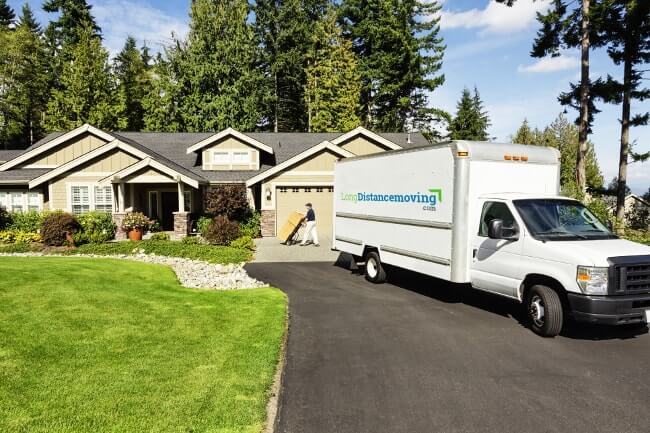Long Distance Move – Top Five Safety Tips

If you are planning to move, especially a large home, it is important for you to find a great mover.
With LongDistanceMoving, you can find the right mover for your long distance move. However, even with a great moving company on your side, you will have a certain amount of clearing out, cleaning up, and, yes, moving that you will have to do as well.
Often, you are showing your home to potential buyers while also preparing for your relocation. That means you may be packing boxes in the evenings and moving them out to the garage or to a storage area.
Or you are unpacking and found that the box you thought you wanted in your office is not needed anymore and should be stored. Or the box of books that used to live in your study is now going into storage. Whatever the case, there will be times even during a professional transportation when you will be the one doing the heavy lifting.
GET A QUOTE
Relocation Is All about Having a Good Plan!
Here then are some tips to help you ensure that your long distance move is safe from start to finish.
1. Planning Is Everything
While we all know that plans often change, especially during a huge transition, the planning process is still important. Thus one of the biggest things you should do whenever you are packing, unpacking, or otherwise working on your move is planning ahead.
Moving safety is often a product of good preparation and organization. Use your head (and your eyes, and checklists, and other tools) before using your muscles.
Don’t just grab a box and lift it unless you know how heavy it is, where it is going, and how it will get there. If something is stuck, don’t force it—that is a good way to damage the item, the space, and your back. Take a breath. Evaluate. See if there is a way to turn the item to easily maneuver it, or if there is another exit it can go through.
2. Proper Weight Properly Distributed
When packing, always ensure you have a combination of heavy and light objects in each box. See to it that boxes all weigh less than 50 pounds.
Use lighter objects like pillows, sheets, and towels to fill in spaces in boxes so that heavier objects like books don’t shift and become out of balance during transit.
Squat down and lift with your legs rather than bending and lifting with your back to avoid injury.
3. The Right Tool for the Job
Don’t try to manhandle heavier pieces if you are putting things in storage before the move. Rent or borrow proper equipment to help in moving larger, heavier items.
A dolly or gliders can help prevent you from carrying heavy items long distances. A ramp on the stairs may be very helpful as well. Straps can help with lifting large or unwieldy items. And a hand truck will prove to be one of your most valuable assets. Many of these can be rented from a company or borrowed from a friend or neighbor.
GET A QUOTE
4. Clear a Path
If you are packing the house prior to moving day, it may be tempting to pack things and leave them wherever they land.
Creating paths and keeping spaces free of obstructions will ensure that you have a more accident-free experience.
Don’t be tempted to fill a hallway or stair landing with boxes. Although it’s an unused space, it may slow down or obstruct movers as they are trying to get larger pieces on the truck first.
Also, check outside, especially if you are moving during inclement weather. Make sure the areas where the truck will be loaded and unloaded are clear and free of obstructions. Slippery path, uneven pavement or intrusive landscaping is a potential cause of accidents.
The more free space you have, the more room there is to maneuver. This can help ensure the safety of your valuables as well as your movers.
5. Keep away
If at all possible, keep children and pets away from the scene of the action during packing and unpacking and on moving day.
If possible, allow them to stay with friends or family so that they are not underfoot. This is safer for them as well as for you and your movers.
Moving can be a stressful situation when pets and children often become upset or unruly, sensing the stress in the environment.
If you are unable to send your children and pets to another house during the process, at least limit their mobility to one room like a playroom or TV room. Then make that room either the first or last one packed. That way they can have a comfortable place to stay for the duration and you can have more peace of mind.
Long distance move is a big undertaking and it can be a challenge. But, if you are careful both in the preparations you make and the time you take to complete tasks, you can ensure that it goes smoothly.
And when it is time to choose a mover, contact us at longdistancemoving.com. We pre-screen professional movers who are rigorously educated in safety processes and procedures, who use top-notch equipment, and know how to ensure a safe and pleasant moving experience.
Fill out our Quote Finder (top of the page) and let us match you with a great moving company today!
GET A QUOTE
Alex Sherr is the founder of Long Distance Moving, a blog that provides moving information and resources for people who are relocating. He has more than two decades of experience in the moving and relocation industry, and he is passionate about helping people relocate smoothly and efficiently. When he's not writing or blogging, Alex enjoys spending time with his wife and two young children.

